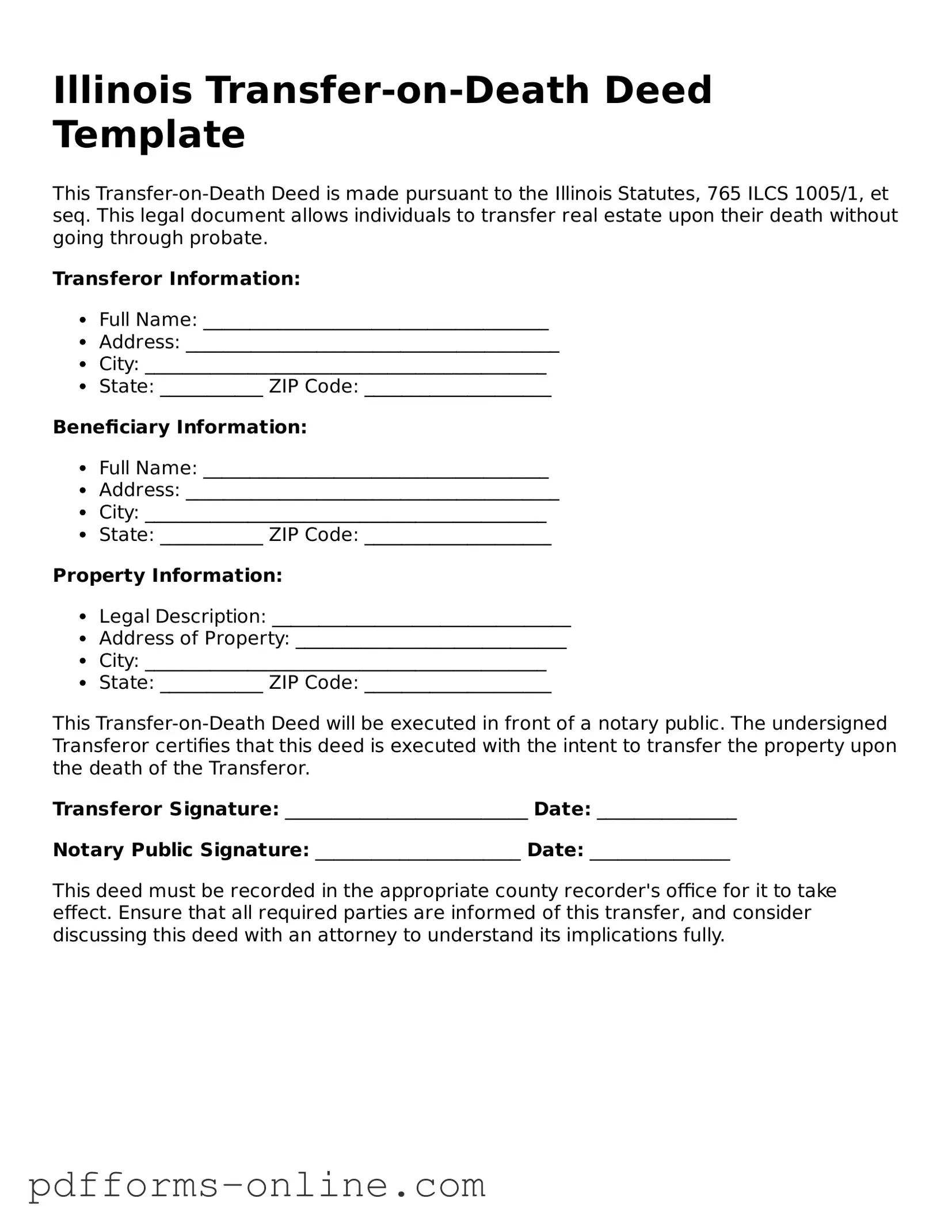Illinois Transfer-on-Death Deed Template
This Transfer-on-Death Deed is made pursuant to the Illinois Statutes, 765 ILCS 1005/1, et seq. This legal document allows individuals to transfer real estate upon their death without going through probate.
Transferor Information:
- Full Name: _____________________________________
- Address: ________________________________________
- City: ___________________________________________
- State: ___________ ZIP Code: ____________________
Beneficiary Information:
- Full Name: _____________________________________
- Address: ________________________________________
- City: ___________________________________________
- State: ___________ ZIP Code: ____________________
Property Information:
- Legal Description: ________________________________
- Address of Property: _____________________________
- City: ___________________________________________
- State: ___________ ZIP Code: ____________________
This Transfer-on-Death Deed will be executed in front of a notary public. The undersigned Transferor certifies that this deed is executed with the intent to transfer the property upon the death of the Transferor.
Transferor Signature: __________________________ Date: _______________
Notary Public Signature: ______________________ Date: _______________
This deed must be recorded in the appropriate county recorder's office for it to take effect. Ensure that all required parties are informed of this transfer, and consider discussing this deed with an attorney to understand its implications fully.
